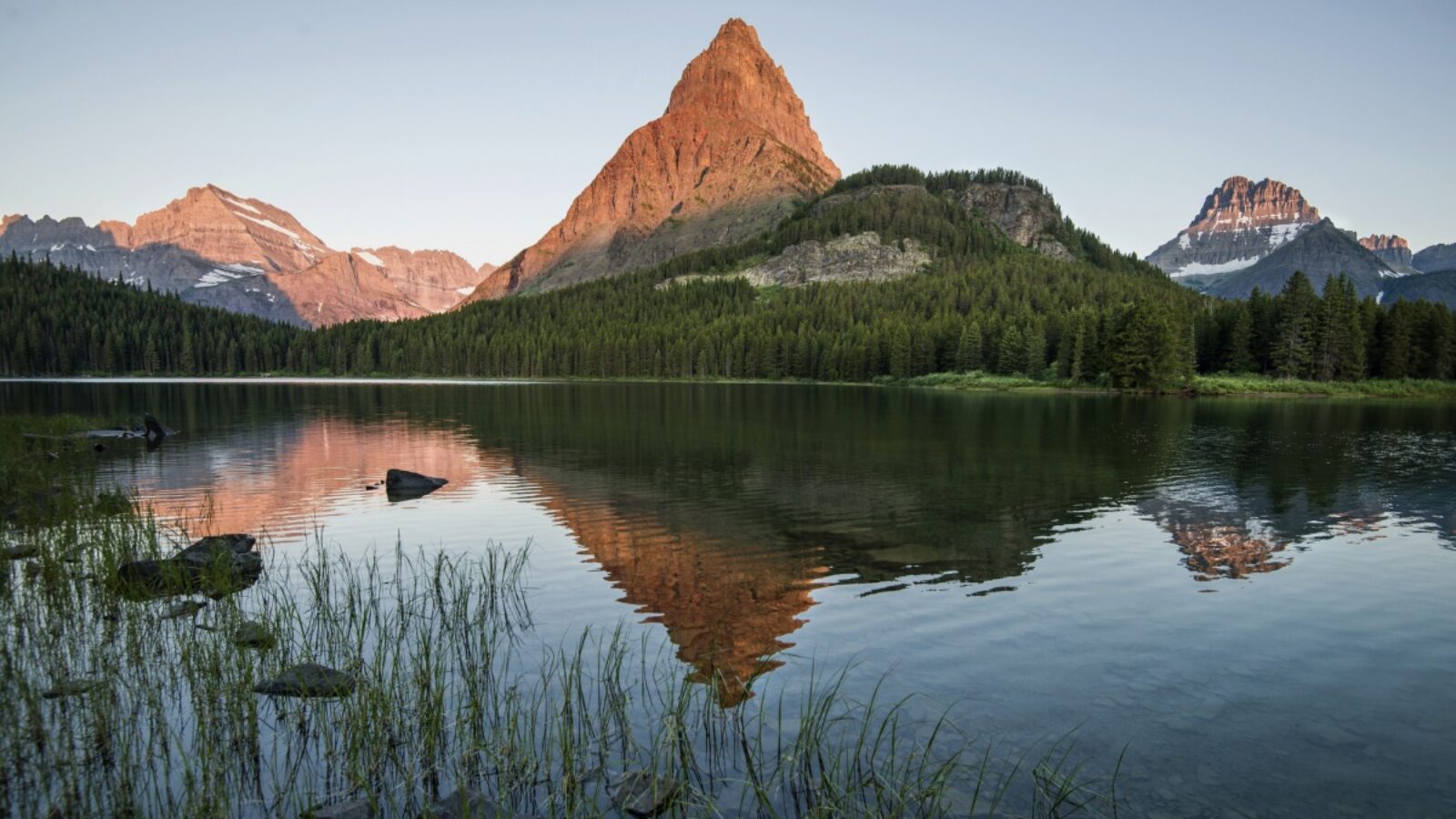May 11, 1910: President William Taft signed the bill that established Glacier National Park. The 1 million-acre park became the country’s 10th national park. Located in Montana, it features glacier-carved peaks and valleys, pristine lakes and streams, and dense forests, perfect for hiking, camping, and exploring American nature at its finest.
doi.gov: 9 Things You Didn’t Know About Glacier National Park
On May 11, 1910, President William Taft signed a bill into law establishing Glacier National Park. The country’s 10th national park, Montana’s Glacier preserves 1 million acres of glacier-carved peaks and valleys, pristine turquoise lakes and streams, and dense ancient forests for all to enjoy. Learn more about the Crown of the Continent as we celebrate this iconic national park.
1. Glacier National Park is a part of the world’s first international peace park. The vision for a park was to celebrate peace and friendship between the United States and Canada. In 1932, Glacier and Waterton Lakes National Park in Alberton, Canada, were designated the Waterton-Glacier International Peace Park. Today, the parks collaborate seamlessly in their preservation, fire management and research efforts. Learn more about Glacier’s international designations.
2. Glacier straddles the Continental Divide, allowing for extreme weather. That’s because the opposing Pacific and Arctic airs meet at the Divide, creating a dramatic clash of weather. In one instance just outside the park’s eastern boundary in Browning, Montana, the temperature was noted as dropping 100 degrees in just 24 hours. When heading out for a day in the park, be sure to bring rain gear and extra clothes.
3. Going-to-the-Sun Road is a spectacular marvel and a must see on your trip to Glacier. Going-to-the-Sun Road connects the east and west sides through the middle of the park, crossing the Continental Divide at Logan Pass. Covering 50 miles of awe-inspiring landscapes, glaciers and cascading waterfalls, this drive is certainly a quintessential part of your visit.
4. Evidence of human use in the area dates back over 12,000 years. Archeological evidence shows human occupation of this landscape dating back to the retreat of the Ice Age glaciers 12,000 years ago. These mountains still hold spiritual significance for the local Blackfeet, Salish and Kootenai Tribes.
5. Glacier has welcomed over 100 million visitors to the park. The park’s annual visitation has been rising over the past five years, hitting a record high of 3,305,512 in 2017. Glacier has certainly come a long way since 1911 with an annual visitation of only 4,000.
6. The largest glacier in the park is 0.7 square miles. Of the 26 glaciers present, Blackfoot Glacier is the largest glacier in the park. Learn how glaciers helped sculpted the park’s landscape.
7. Glacier holds over 700 miles of hiking trails. Over half of the visitors to Glacier National Park hit the trail to see some of the outstanding scenic views the park has to offer. With opportunities for both long backpacking trips and shorter hikes, there is something for everyone. Hiking not your thing? From biking and fishing to cross-country skiing and red bus tours, there’s plenty to do at Glacier.
8. Glacier’s wildlife has hardly changed since it was first discovered. Home to 71 species of mammals, Glacier’s ecosystem has essentially remained intact and undisturbed. This is mostly because of its large acreage and early protection efforts, but nonetheless the park’s preservation of species since early European explorations is quite impressive.
9. Lake McDonald is a favorite of visitors. Ten miles long and nearly 500 feet deep, Lake McDonald is the largest lake in the park. The clear blue lake is surrounded by high peaks, making it a picturesque spot. It’s most striking feature: the lake’s colored rocks in shades of red, green, and blue. Check out other places in Glacier to explore.
